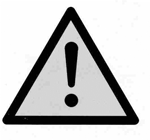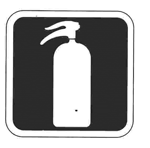Safety Signs
Download Safety Signs PDFINTRODUCTION
The Health and Safety (Safety Signs and Signals) Regulations 1996 require employers to provide and maintain safety signs where there is significant risk to health and safety that has not been avoided or controlled by other means (e.g. safe systems of work) provided that the use of a sign can help reduce the risk. All workplaces and activities where people are employed are covered (with exceptions relating to the transport and supply & marketing of dangerous substances, products and equipment). They also require, where necessary, the use of road traffic signs in workplaces to regulate road traffic. A new requirement of the regulations is to mark pipe work containing dangerous substances. Employers must also ensure that all employees receive appropriate information, instruction and training regarding safety signs. Although most signs are self-explanatory, some employees (particularly young or new workers) may be unfamiliar with the signs used.
SO WHAT IS A SAFETY SIGN?
A safety and/or health sign is ‘information or instruction about health and safety at work on a signboard, a colour, an illuminated sign or acoustic signal, a verbal communication or hand signal.’ These terms are all detailed in guidance to the regulations.
A signboard is a combination of shape, colour and symbol or pictogram made visible by adequate lighting and which may have supplementary text.
Signboards, including fire safety signs, are designed as follows:-
Where the marking of dangerous locations is deemed necessary (e.g. highlighting the edge of a raised platform or area or restricted heights) yellow & black or red & white stripes may be used.

Traffic routes should take the form of continuous lines, preferably yellow or white.
Guidance on other forms of safety signs (illuminated signs, acoustic signals, hand signals and verbal signals) is given in the guidance booklet L64 ‘Safety signs and signals’ (see References/Further Details section)
Advice on fire safety signs can be obtained from your local fire authority. In general, where signs comply with the appropriate current standard (BS 5499) they will not require changes for the Regulations.
EFFECT ON EMPLOYERS
Most firms already use safety signs to warn and instruct employees of risks to their health and safety. The signboards specified in the Regulations are already covered by the existing British Standard BS5378 ‘Safety Signs and Colours’. Equally, the law already requires suitable illuminated signs and acoustic signals to be used where necessary. Although the regulations specify a code of hand signals for mechanical handling and directing vehicles, they permit other signals to be used where necessary e.g. BS7121 Code of Practice for the safe use of cranes.
In the case of fire safety signs, where employers decide that a previously acceptable sign is not of a type referred to in the Regulations they had until 24th December 1998 to replace it. All safety signs now need to meet the requirements of the Regulations.
REFERENCES/FURTHER DETAILS
Publications
Booklet L64 – Safety Signs and Signals. The Health and Safety (Safety Signs and Signals) Regulations 1996 – Guidance on Regulations (HSE)
ISBN 0 7176 0870 0
Leaflet IND(G) 184L – Signpost to the Health and Safety (Safety Signs and Signals) Regulations 1996. (HSE)





